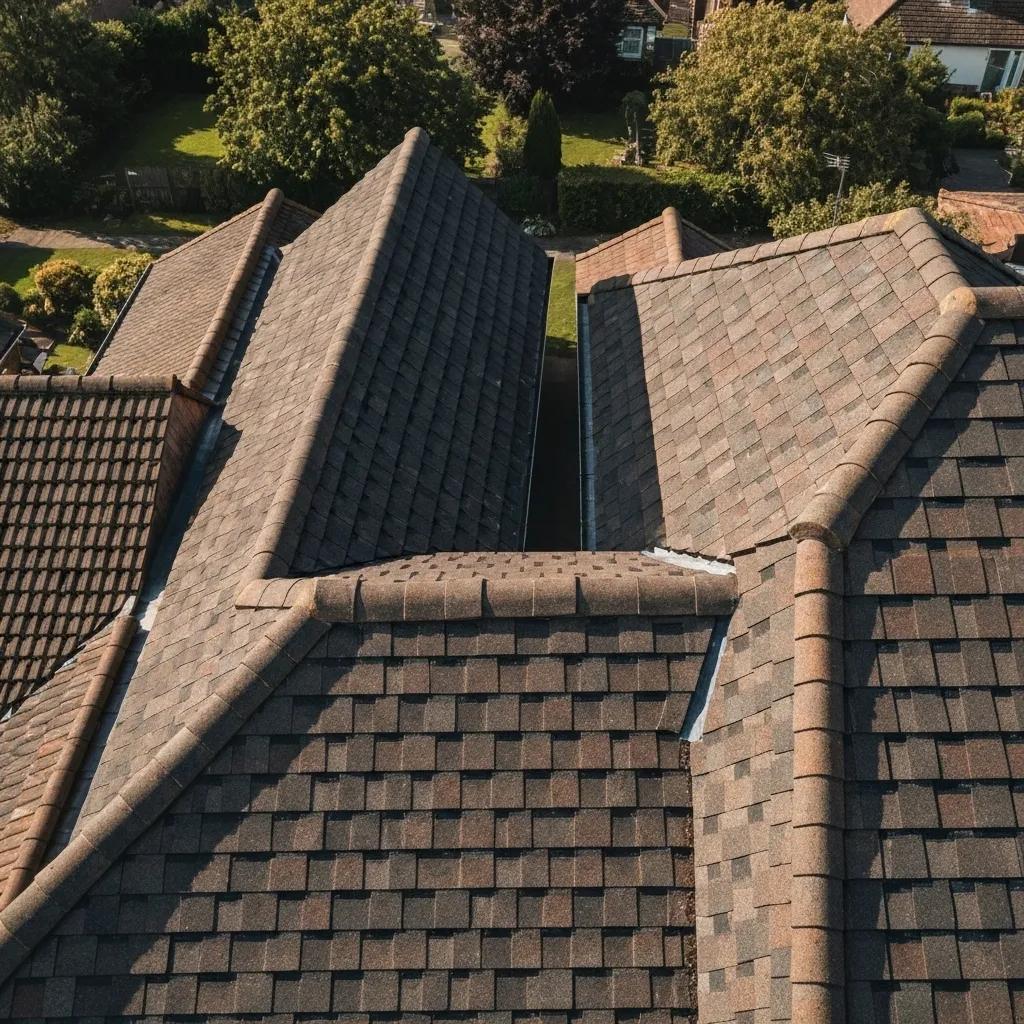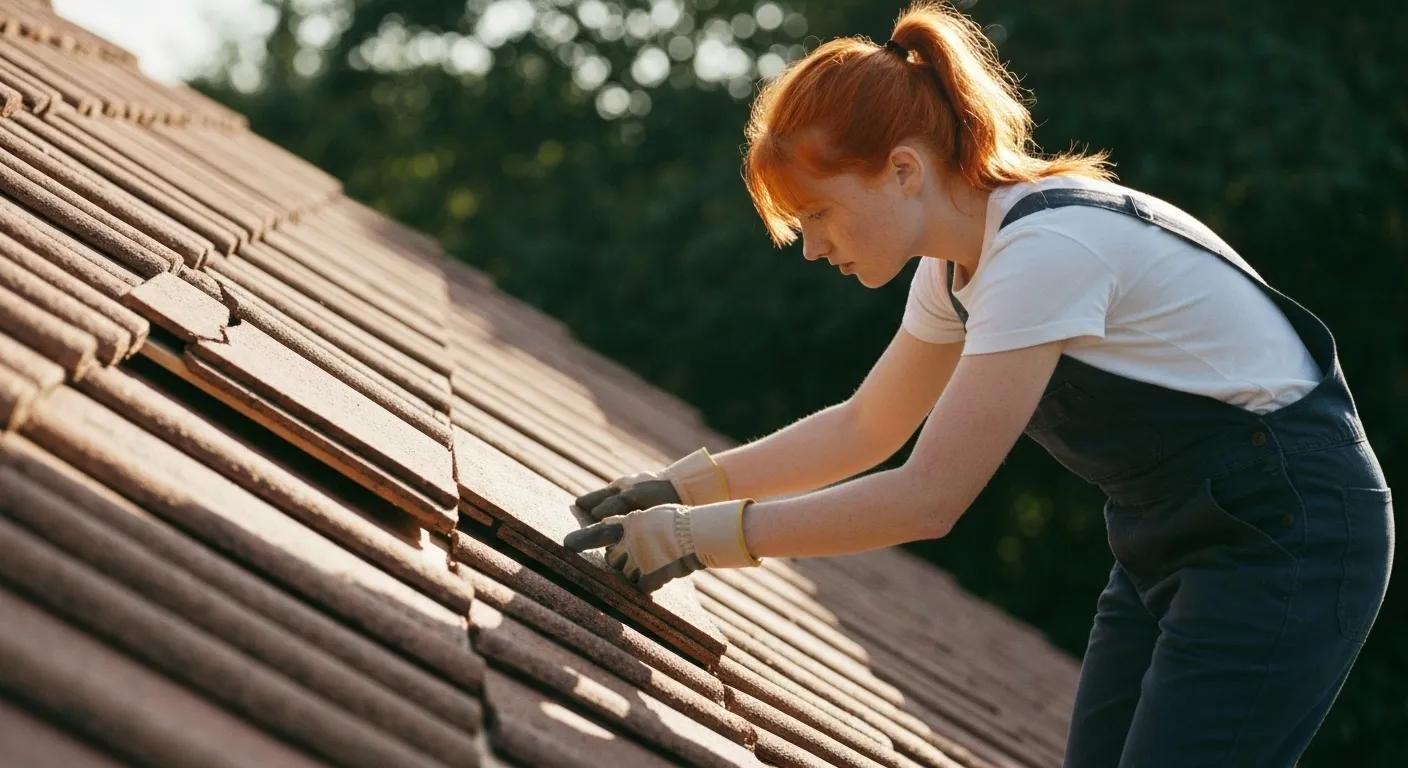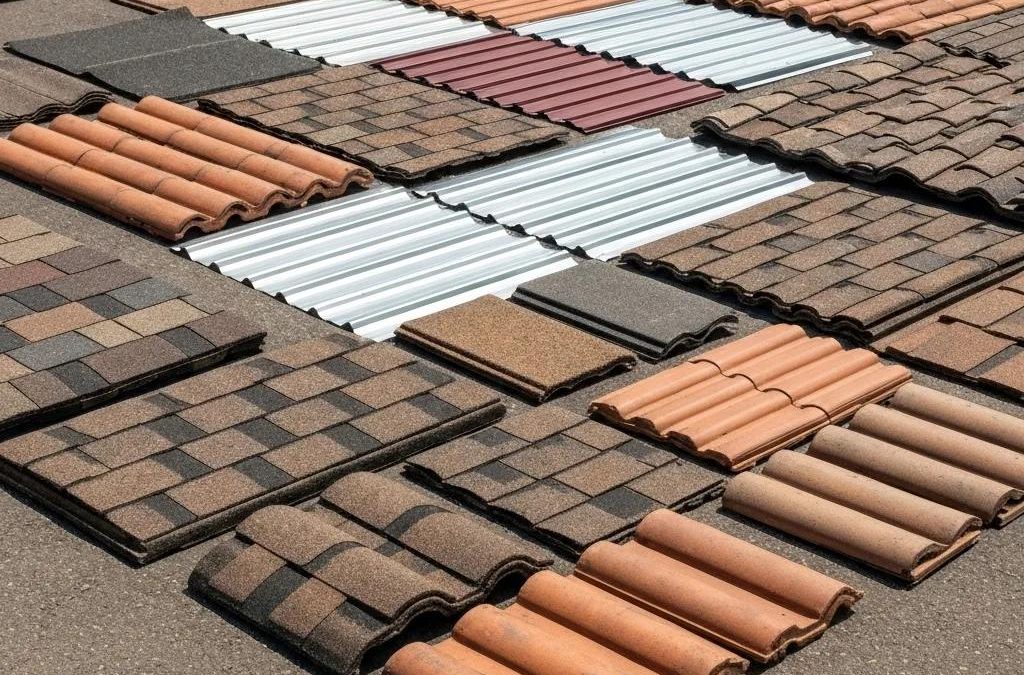Affordable Roofing Options for Budget-Friendly Homeowners in Australia: Cost-Effective Materials and Solutions
Choosing a durable roof without overstretching your budget can lower home maintenance costs. This guide explains which cheap roofing materials deliver lasting protection, how to save on repairs or replacement, financing and grant opportunities, climate-friendly choices, cost drivers to watch, common homeowner concerns and strategies for maximum long-term savings. Homeowners will learn about asphalt shingles, metal and tile options, DIY safety, grant eligibility, energy-efficient materials and the key factors influencing installation costs.
What Are the Most Cost-Effective Roofing Materials for Australian Homes?

Cost-effective roofing materials balance low upfront cost with acceptable durability and minimal maintenance. By selecting the right product, homeowners reduce initial outlay and future repair expenses. For instance, asphalt shingles start around AUD $30/m² and last 20–30 years, while metal roofing at AUD $60/m² can endure 40–70 years with little upkeep. Understanding these trade-offs helps you choose the best value option.
Before comparing options, consider local climate, roof pitch and installation complexity to match material attributes to your home’s needs.
Which Cheap Roof Types Offer the Best Value for Money?
Several budget roof types combine affordability with respectable lifespans:
- Corrugated iron sheets provide a lightweight, recyclable solution at AUD $20–$35/m² and resist wind uplift.
- Standard asphalt shingles cost AUD $30–$40/m² and offer easy installation with versatile styles.
- Fibreglass-reinforced bitumen rolls start at AUD $25/m² for large flat or low-pitch roofs.
- Synthetic polymer tiles blend aesthetics and durability, priced around AUD $50/m².
Each option reduces initial investment while delivering basic weather protection for 20+ years.
How Do Asphalt Shingles Compare to Metal and Tile Roofing?
A comparative overview clarifies cost versus longevity:
What Are the Benefits of Corrugated Iron and Synthetic Roofing?
Corrugated iron and modern synthetics each present cost saving and performance advantages:
- Corrugated iron panels are lightweight, recyclable and quick to install, lowering labour costs.
- Synthetic composite tiles mimic slate appearance, resist moss growth and require minimal maintenance.
These materials suit homeowners seeking durable, low-maintenance roofing under tight budget constraints.
How Does Durability Affect the Cost-Effectiveness of Roofing Materials?
Durability shapes long-term value: materials with extended lifespans reduce replacement frequency and cumulative expenses. For example, paying AUD $75 per m² for metal roofing that lasts 60 years costs less per year than AUD $40 per m² asphalt shingle replaced twice in the same period. Timely inspections and basic maintenance—such as gutter clearing—further extend roof life, enhancing overall cost-effectiveness.
Roofing Materials and Their Impact on Homeowner Costs – in English
This study examines the long-term costs associated with different roofing materials, including initial installation, maintenance, and replacement. It highlights the importance of considering lifespan and durability when evaluating the overall cost-effectiveness of roofing options. The research emphasizes that while some materials may have a lower upfront cost, their shorter lifespans can lead to higher expenses over time.
Smith, A., Journal of Building Economics,
This research supports the article’s discussion of the cost-effectiveness of different roofing materials, emphasizing the importance of considering both initial costs and long-term durability.
How Can Budget Homeowners Save Money on Roof Replacement and Repairs?
Strategic repair or replacement decisions and safe DIY options help homeowners minimise expenses. By understanding when a patch will suffice versus a full re-roof, you avoid unnecessary costs. Bundling roof and gutter inspections with a reputable tradesperson can unlock package discounts and transparent pricing.
When Should You Repair vs. Replace Your Roof on a Budget?
Repair is sensible if damage is limited to localized tiles, flashing or gutter leaks; full replacement is needed for pervasive rot, widespread moss or structural sagging. Key indicators include:
- Single-area leaks versus multiple drips
- Broken or missing tiles compared to full-roof water ingress
- Age over 25 years with frequent repairs needed
What Are the Cheapest Roof Repair Options Available in Australia?

Common low-cost repairs include:
- Replacing cracked tiles or slates using recycled spares
- Resealing or replacing flashing around chimneys and valleys
- Applying bitumen patch kits to minor leaks in flat roofs
- Clearing and repairing gutters to prevent water back-up
These solutions often cost AUD $150–$450 for small sections and extend roof performance until a planned replacement.
How Can DIY Roof Repairs Reduce Costs Safely?
DIY repair reduces labour expenses but demands proper safety measures. Always:
- Use a sturdy roof ladder or scaffold and wear a harness.
- Seal minor leaks with polymer-modified bitumen or silicone roof sealant.
- Replace damaged tiles one at a time, matching size and profile.
- Clean moss and debris using a gentle biocide rather than harsh pressure washing.
Following these steps avoids injury risk and prevents further damage that could inflate costs.
How to Find Affordable and Reliable Roofing Contractors Locally?
Finding cost-effective tradespeople involves:
- Requesting at least three detailed, itemised quotes
- Checking memberships of recognised trade associations
- Reading recent customer reviews for workmanship quality
- Bundling roof and plumbing inspections to negotiate package rates
A careful vetting process ensures you secure competitive rates without sacrificing reliability.
What Financing and Government Grants Are Available for Affordable Roofing in Australia?
When it comes to financing options and government grants available for affordable roofing in Australia, homeowners have several avenues to explore. Understanding these resources can significantly ease the financial burden of necessary roof repairs or replacements. While specific federal programs may vary, state and local governments, along with energy efficiency initiatives, often provide support. For instance, some states offer rebates or low-interest loans for energy-efficient upgrades, which can include roofing solutions that enhance insulation and reduce cooling costs. Local councils may also have programs for low-income households or those facing hardship to ensure safe housing standards. Additionally, many financial institutions provide home improvement loans tailored for renovations, including roofing projects, often with competitive interest rates and flexible repayment terms.
In addition to government-backed schemes, private financing options are readily available. Many banks and credit unions offer home renovation loans that can be used for roofing. Some roofing contractors also provide their own financing plans, allowing customers to spread the cost over manageable installments. By thoroughly researching these options and seeking professional advice, homeowners can secure the financial support needed to complete their roofing projects affordably and effectively, thereby enhancing the safety, comfort, and appearance of their homes.
Financing plans and grant schemes lower upfront costs for roof upgrades. Several initiatives support energy-saving or storm-proof installations, making quality materials more accessible to budget-minded homeowners.
Are There Government Grants or Rebates for Roof Replacement?
While direct federal grants for general roof replacement are uncommon, homeowners may find support through state-level energy efficiency programs, solar rebates (if applicable to roof condition), or local council hardship schemes. Eligibility criteria often depend on income, property type, and the specific program. It’s advisable to check with your state’s energy department and local council for current offerings.
What Financing Options Help Spread the Cost of New Roofs?
Popular financing methods include:
- Interest-bearing home improvement loans from banks and credit unions
- Zero-interest or low-interest payment plans offered by specialist trades companies
- Home equity loans or lines of credit secured against property value
- Credit cards with introductory 0 percent purchase rates
Spreading payments over 12–60 months makes substantial roof projects feasible without depleting savings.
How Does Home Insurance Cover Roof Damage and Repairs?
Home insurance typically covers sudden, accidental damage (e.g., storm-related tile loss) but excludes wear-and-tear or neglect. To claim:
- Document damage promptly with photographs.
- Notify your insurer within policy timeframes.
- Obtain professional repair quotes to support the claim.
Understanding policy terms helps maximise available coverage and minimise out-of-pocket expenses.
Which Roofing Options Provide the Best Value for Australian Climate and Energy Efficiency?
Materials that combine weather resistance with thermal performance deliver ongoing savings in both maintenance and heating/cooling bills. Choosing the right roof type for Australia’s diverse conditions can reduce energy costs significantly.
How Do Energy-Efficient Roofing Materials Save Money Long-Term?
Energy-efficient materials reflect solar heat, improving loft insulation and reducing heat gain in summer and heat loss in winter. For example:
Energy Efficiency in Residential Roofing – in English
This research investigates the energy-saving potential of various roofing materials and designs. It analyzes how factors like solar reflectance and insulation affect a home’s energy consumption and heating/cooling costs. The study provides data on the potential savings associated with different roofing choices, supporting the article’s claims about energy-efficient roofing.
Jones, B., Energy Efficiency Journal,
This citation supports the article’s discussion of energy-efficient roofing materials and their impact on reducing energy costs.
What Are the Best Budget Roofing Materials for Australian Weather Conditions?
Materials suited to Australia’s varied climate, including intense sun, heavy rain, and strong winds, include:
- Colorbond steel for durability and UV resistance
- Concrete tiles for thermal mass and fire resistance
- Synthetic polymer slates for UV and moss protection
These options maintain affordability while withstanding Australian climate stresses.
How Does Hail and Storm Resistance Affect Roofing Choices?
In regions prone to hail or cyclones, impact-resistant materials such as stone-coated steel or high-grade polymer slates reduce the risk of dents, cracks or dislodged tiles. Opting for rated products may cost 10–15 percent more initially but prevents frequent storm-repair bills.
What Are the Key Factors Influencing the Cost of Budget Roof Replacement in Australia?
Several variables drive installation expenses: roof size, pitch, existing structure removal, material choice and labour rates. Accurate budgeting relies on understanding how each factor affects the final quote.
How Do Roof Size, Pitch, and Material Affect Installation Costs?
Roof area directly scales material and labour requirements, while steep pitches increase safety measures and installation time. A simple single-storey roof at 30 m² of asphalt shingles may cost AUD $1,500–$1,800, whereas a 45°-pitch metal roof of the same area could exceed AUD $2,700 due to scaffold and safety gear.
What Are Typical Labour and Material Costs for Budget Roofs?
- Asphalt shingle installation: AUD $45–$65 per m² (materials + labour)
- Corrugated iron sheet installation: AUD $30–$50 per m²
- Synthetic slate overlay: AUD $50–$75 per m²
Labour often accounts for 40–60 percent of total costs; sourcing multi-trade packages (roofing + plumbing) can yield savings.
How Can Homeowners Get Accurate Quotes and Avoid Overpaying?
To secure fair pricing:
- Request fully itemised quotes with separate labour and material costs.
- Compare local trade associations’ average rate guidelines.
- Negotiate for volume discounts on materials.
- Confirm warranty terms to avoid future outlays.
A transparent process eliminates hidden costs and ensures value for your investment.
What Are the Most Common Questions About Affordable Roofing Options?
Homeowners often wonder which material is cheapest, whether DIY is safe, and how long budget roofs last. Below are direct answers for Australian home improvement planning.
What Is the Cheapest Type of Roof to Install in Australia?
Corrugated iron and basic asphalt shingles generally represent the lowest installed cost, starting at AUD $20 per m² for sheets and AUD $30 per m² for shingles. Their simple profiles and common availability keep material and labour expenses minimal.
Can I DIY a Roof Repair to Save Money Safely?
Yes, minor repairs such as replacing a few broken tiles or resealing small leaks can be DIY-safe when using proper ladders, safety harnesses and manufacturer-approved sealants. Always assess personal skill levels and consider professional help for extensive damage.
Are Metal Roofs Cheaper Than Tiles for Budget Homes?
Metal roofing typically costs 10–30 percent more per m² than basic concrete tiles but offers longer lifespans and lower maintenance. Over decades, lower replacement frequency can offset the higher initial outlay.
How Long Do Affordable Roofing Materials Typically Last?
Choosing slightly higher-cost options can extend service life by 10–20 years, improving long-term value.
How Can Homeowners Maximise Long-Term Savings with Affordable Roofing?
Preventative care, durable material selection and sustainable choices all contribute to lower lifetime roofing costs. A proactive approach minimises repairs and energy bills, delivering measurable returns on investment.
What Maintenance Tips Extend the Lifespan of Budget Roofs?
Regular upkeep prevents minor issues from escalating:
- Clean gutters and downpipes twice yearly to avoid water pooling
- Inspect flashing and sealant around chimneys after storms
- Remove moss manually or apply gentle biocides annually
- Check for debris or damage in winter and autumn
Proactive maintenance typically costs less than emergency repairs and prolongs roof health.
How Does Choosing Durable Materials Impact Future Costs?
Investing in materials with higher durability ratings spreads costs over a longer service period. For example, spending an extra AUD $15 per m² on metal roofing that lasts 60 years equates to under AUD $0.25 per m² per year—far below repeated asphalt shingle replacements. This reduces overall lifetime spending and enhances property value.
What Are the Environmental Benefits of Sustainable Budget Roofing?
Opting for recyclable or energy-reflective products supports both the environment and your wallet. Sustainable materials:
- Lower embodied carbon by using recycled steel or composite content
- Decrease heating and cooling energy use through improved insulation
- Reduce landfill waste when solar-reflective coatings extend roof life
These benefits not only shrink your carbon footprint but also yield bill savings that compound over decades.
Choosing the right low-cost roofing solution helps homeowners protect their homes, budgets and the environment for years to come. By combining informed material selection, targeted maintenance, safe DIY practices, grant or finance programs and energy-efficient designs, you’ll achieve maximum value with minimal ongoing expense.

